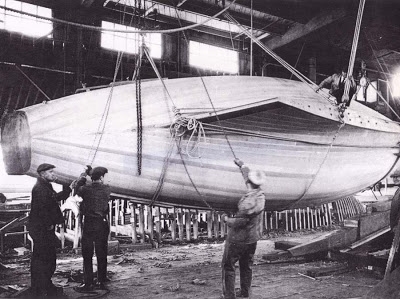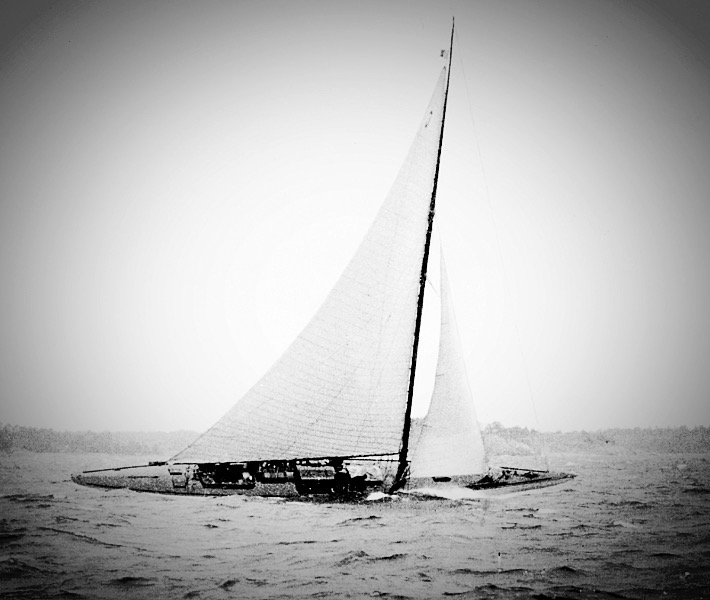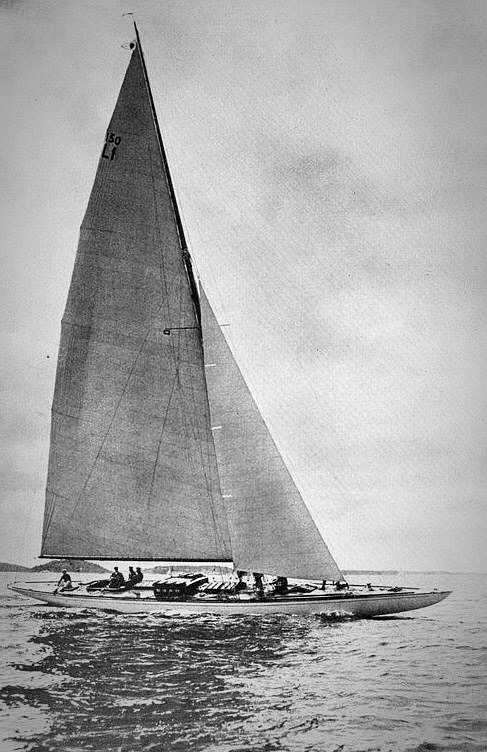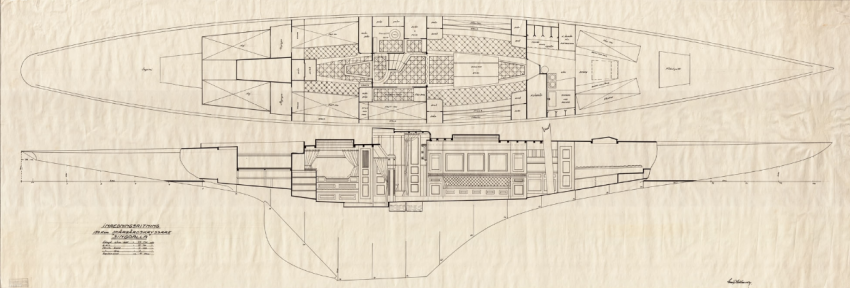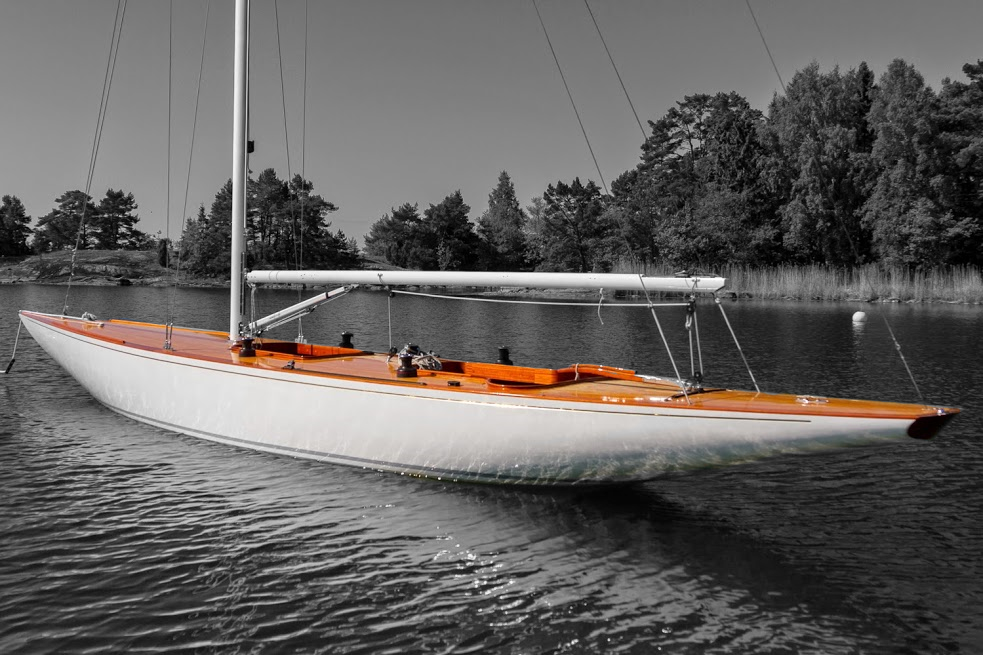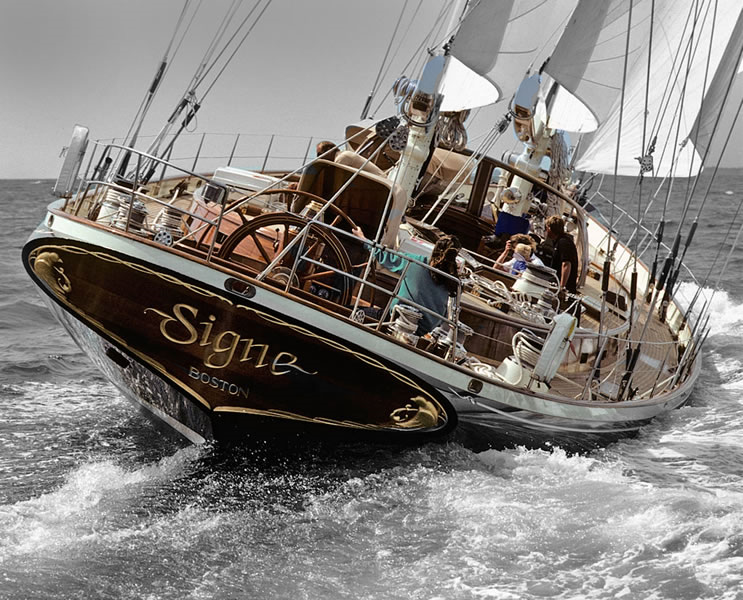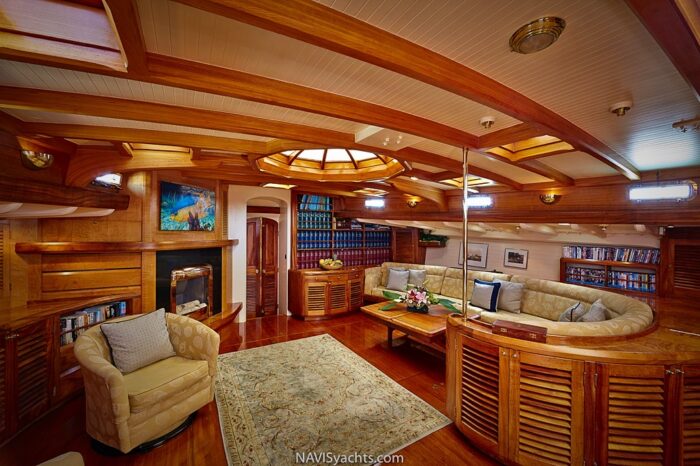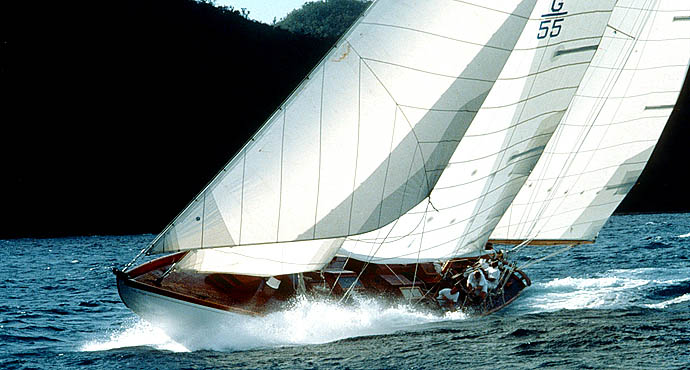
Sail Number: 55
Type: Ketch
Ex; 1929 Karenita; 1930 Aviner; 1933 Simoon; 1934 Watchette II; 1936 Karenita; 1938 Sirocco
LOA: 74’7″ / 22.73m – LWL: 48’9″ / 14.85m – Beam: 14’11” / 4.54m – Draft: 9’6” / 2.89m – Design Number: 0422 – Designer: John G. Alden – Current Owner: Private – Year Launched: 1929 – Built By: George Lawley & Sons, Neponset, Massachusetts USA – Hull Material: Wood – Displacement: 76000 lbs / 34545kg – Ballast: 30000 / 13636 (Lead Casting) – Sail Area: 2086 ft² / 193.80 m²
Historical:
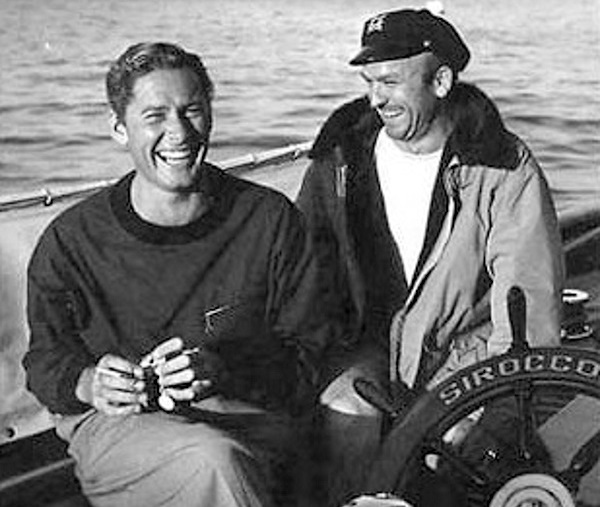
Formerly owned by actor Errol Flynn as ‘Sirocco’, she hosted many famous names in the heyday of Hollywood, and more recently has been the flagship of the fashion clothing company ‘Blanc Bleu’.
Flynn and his buddies indulged in so many antics that they earned the reputation of being the most notorious, hard-drinking “hell-raisers” on the island. Nearly every weekend the men would race their yachts to Catalina – Flynn on his Sirocco, Weissmuller on his Allure, and Bogart aboard his Santana. All three would bet on the outcome.
One particular race between them has reached legendary status. Weissmuller won and promptly boarded Flynn’s yacht to collect his winnings. According to an account related by Johnny Weissmuller Jr., Flynn was “drunk and belligerent,” and responded to his loss by aiming a small cannon mounted on the bow of his yacht at Weissmuller’s boat. As he lit the fuse, he removed a cigar from his mouth and announced: “I’ll sink you, you sumbitch!” Weissmuller rushed to the cannon and kicked the barrel upward, launching the cannonball straight up into the sky. The men watched helplessly as the projectile plunged vertically and tore through the yacht’s upper deck, missing the two by only a few feet. After a few seconds, Flynn “burst into uproarious laughter.”
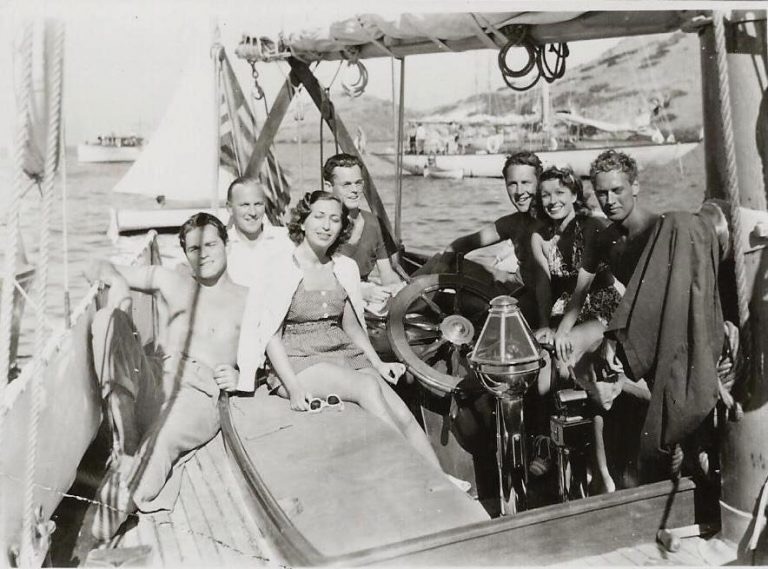
Provenance (The Wall of Remembrance – The Owners, Crew & Notable Guest):
Owner/Guardian: (1929) Demarest Lloyd, Washington, DC
Owner/Guardian: (1938-1946) Errol Flynn
Actress/wife: Lili Damita (son Sean Flynn, while on assignment in Cambodia in April 1970, Flynn with fellow photojournalist Dana Stone were captured by communist guerrillas. Neither man was seen or heard from again.)
Business Manager: Wally Heinz
Actor: David Niven
Actor: Johnny Weissmuller
Actor: Humphrey Bogart
Actor: Lou Costello
Actor: Dick Powell
Owner/Guardian: (1960s-1970s) Mr. Jack Belcher, Las Vegas architect
1965 Captain Anthony Carter (South Seas cruise, Los Angeles-Tahiti waters and return.)
First Mate: M. Smith
Cook: John Smedley, Sydney
Crew: Bill Davis,
Crew: Mr. and Mrs. Roger Seastedt
Crew: Miss Laurel Bentley
Crew: Miss Judy Malone.
Resources
Catalina Islander
Errol Flynn Blog
Alden’s Designs
Tarzan, My Father, by Johnny Weissmuller, William Reed
Pacific islands monthly : PIM.Vol. 36, No. 2 ( Feb. 1, 1965)
Comments
BARBARA ANNE TUCKERMAN – June 30, 2021
Who owned SIROCCO around 1972/73 ?
I sailed on her (briefly) – in the South Pacific off Australia – Black Jack Mutton was a friend of owner –
The boat had been ‘restored’ in NZ I think
Can’t imagine I’ll hear but hope to be lucky.
Many thanks.
Judy Colling – November 14, 2021
I was part of a crew that chartered Sirroco in 1965 and sailed to Tahiti. We spent Christmas in Tahiti and New year in Bora Bora. Sirroco was owned by a guy named Jack Belcher. Tony Carter captained the yatch. We where gone 5 months. What a blast. I was 19.


